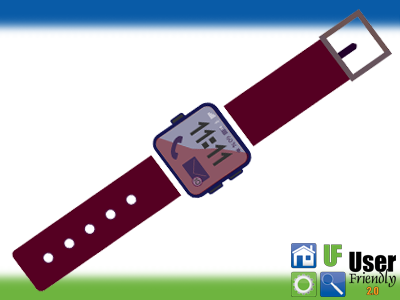By User Friendly 2.0
By: William Sikkens
Host, User Friendly 2.0 Saturday’s at 5:00 p.m.
Facebook is Making a Smart Watch. It’s still conceptual. It’s different.
According to a recent blog post at about.fb.com it is described as:
“A separate device you could store in your pocket like a phone or a game controller adds a layer of friction between you and your environment. As we explored the possibilities, placing an input device at the wrist became the clear answer. The wrist is a traditional place to wear a watch, meaning it could reasonably fit into everyday life and social contexts. It’s a comfortable location for all-day wear. It’s located right next to the primary instruments you use to interact with the world — your hands. This proximity would allow us to bring the rich control capabilities of your hands into AR, enabling intuitive, powerful and satisfying interaction.”
Facebook is a big company. Over the years they have stepped out into other devices and some have been met with success and others not so much. We have talked about their Oculus series Virtual Reality headsets (VR) like the Quest 2 which have been very successful. Their attempt to create a “Facebook Phone” with HTC, on the other hand, crashed and burned.
This new “smart watch” device is different in a number of ways. First it may be a controller for Augmented Reality (AR). Second, based on the information available it is specifically designed to use electromyography (EMG) sensors to interpret motor nerve signals and interact with the interface accordingly. If this works it would be a first line into wearable cybernetics. During a Clubhouse event earlier this month Facebook CEO Mark Zuckerberg said:
“If you’re trying to build a watch, which we’re exploring as we talked about the wrist thing and I don’t want to call it a watch, but it’s the basic neural interfaces work that our Facebook reality labs team demoed some of our research about today. With the neural interface on the wrist, if you want that to integrate with the phone in any way, it’s just so much easier on Android than iOS. My guess is that this is an area where there probably should be a lot more focus. And I do think the private APIs are just something that makes it really difficult to have a healthy ecosystem.”
My question is – do you really want Zuckerberg to have direct access to your neurons?
Facebook goes on to explain that this approach to technology isn’t actually reading your mind. The description is that when you have a thought to do something your brain sends signals to your body to respond. The Facebook watch would be designed to decode the signals and act upon them only when relevant to the device.
This type of technology is still a few years off. The proof of concept exists with cybernetic limbs and other quality of life enhancements that can respond to a thought. National Geographic published an article back in 2014 that talks about the ability to restore feeling in an amputee. Stat News, a leading publication in health technology, published a prototype of a mind controlled prosthetic arm last April (https://www.statnews.com/2020/04/30/mind-controlled-prosthetic-arm-patients-feel-objects/).
The ability to do this as a part of our normal lives may be just a matter of time.
William (Bill) Sikkens has been an on-air technology expert since 2014. With an expertise in I.T., cyber security and software design he has had more than 20 years’ experience with advanced technology. Sikkens conceptualizes and designs custom applications for many professional industries from health care to banking and has the ability to explain the details in a way all can understand. Article edited by Gretchen Winkler, who along with Jeremy Winkler are the co-hosts of User Friendly 2.0 here on The Answer Saturday’s at 5:00 p.m.
Links and brand/store information provided are for information only and are not endorsed by Salem Media Group, KPAM or the shows hosts.
Got a technology question or comment for Bill? Follow him on Twitter @sikkensw


